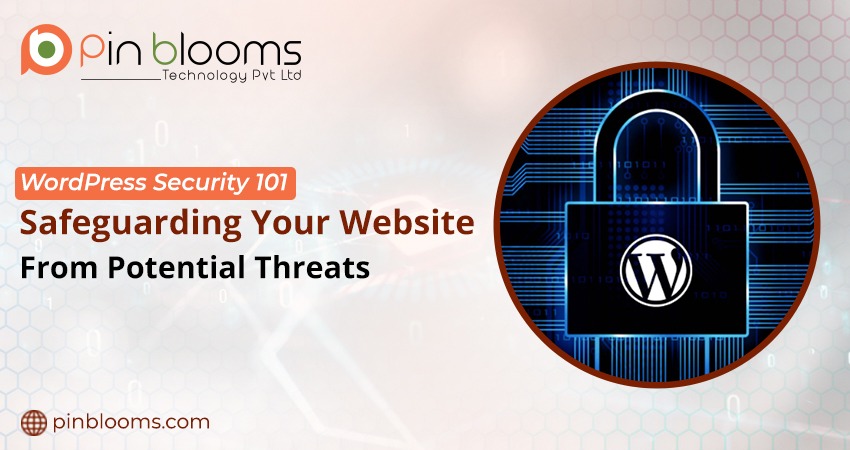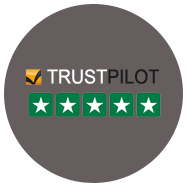In the dynamic landscape of the digital world, ensuring the security of your WordPress website is paramount. As the backbone of numerous online platforms, WordPress is a prime target for cyber threats, making it essential for website owners to be well-versed in security measures. This comprehensive guide will delve into the critical aspects of WordPress security, providing valuable insights and actionable strategies to fortify your website against potential threats.
1. Introduction to WordPress and its Popularity
WordPress stands out as a widely embraced content management system renowned for its user-friendly interface and a rich ecosystem of plugins, making it the backbone of a significant portion of the internet. This popularity, however, comes with its set of vulnerabilities.
Example: WordPress’s intuitive design empowers even non-tech-savvy users to create websites effortlessly, contributing to its massive user base.
Common Security Threats Faced by WordPress Sites:
WordPress, being a popular platform, is often targeted by cyber threats. Common security threats include SQL injection, where attackers manipulate a site’s database, cross-site scripting (XSS) exploiting browser vulnerabilities, and brute force attacks attempting to guess passwords.
Example: An outdated plugin might have vulnerabilities that hackers exploit through cross-site scripting, injecting malicious code into a site.
Here we have some techniques for Magento SEO that are capable of driving in higher sales:
The Impact of Security Breaches on Websites and Businesses
Security breaches can wreak havoc on websites and businesses, leading to compromised data, a damaged reputation, and financial loss. This underscores the critical need for robust security measures.
Example: A security breach might expose sensitive user data, resulting in a loss of customer trust, and potentially, legal consequences.
2. Essential Security Measures
Ensuring the security of your WordPress website involves adopting essential measures that act as the foundation for robust protection.
Keeping WordPress Core, Themes, and Plugins Updated
Regular updates are crucial to patch vulnerabilities. An outdated core or plugin can be an entry point for hackers. Frequently updating your WordPress core, themes, and plugins is akin to maintaining the locks on your doors. Just as outdated locks make your home vulnerable to break-ins, neglecting updates exposes your website to potential cyber threats. For instance, let’s consider a scenario where a WordPress security update is released to address a vulnerability in a widely used plugin. If your site doesn’t promptly install this update, it becomes an easy target for hackers who exploit the known weakness. Therefore, prioritizing regular updates is a fundamental step in fortifying your site’s defences.
Implementing Strong Authentication Mechanisms
Robust password policies and two-factor authentication add layers of protection against unauthorized access. Think of authentication mechanisms as the keys to your digital kingdom. Strong, unique passwords act as the first line of defence, while two-factor authentication (2FA) adds an extra layer. For instance, a robust password might include a combination of uppercase and lowercase letters, numbers, and symbols. Meanwhile, 2FA ensures that even if someone manages to obtain your password, they would still need a secondary code (often sent to your mobile device) to gain access. This dynamic duo significantly reduces the risk of unauthorized logins, safeguarding your website against potential breaches.
Regular Backups: A Safety Net for Your Website
Regular backups ensure quick recovery in case of data loss, providing a safety net for your website. Consider backups as insurance for your digital assets. Accidents happen, and sometimes data gets lost or corrupted. Regularly backing up your website is akin to having a safety net. In the event of a mishap, such as a site crash or accidental deletion of important files, you can swiftly restore your site to a previously saved state. This not only ensures the continuity of your online presence but also minimizes downtime and potential data loss.
Choosing Reliable Hosting Services with Emphasis on Security
Selecting a hosting service with strong security features is foundational to a secure WordPress site. Think of your hosting service as the fortress that houses your website. Choosing a reliable hosting provider is crucial because they play a pivotal role in safeguarding your site against external threats. For instance, a hosting service with robust firewalls acts as a barrier, monitoring and blocking malicious traffic before it reaches your website. Additionally, providers with intrusion detection systems can quickly identify and respond to potential security breaches. Therefore, investing in a hosting service with a strong emphasis on security is akin to fortifying the walls of your digital castle.
These essential security measures collectively create a resilient defence system, protecting your WordPress website from a myriad of potential threats. Adopting these practices ensures that your online presence remains secure, your data stays intact, and your visitors can interact with your site in a safe digital environment.
3. Securing User Access
In the sphere of website security, securing user access is critical to prevent unauthorized actions and maintain the integrity of your WordPress site. Let’s explore the best practices in detail:
User Roles and Permissions: Best Practices
Assigning appropriate user roles and permissions is similar to giving keys to different doors within your website. This practice ensures that users have access only to what is necessary, minimizing the risk of both accidental and intentional misuse.
Example: Imagine a scenario where you have a contributor who writes blog posts. Instead of assigning them an administrator role, which grants extensive access, assigning them a contributor role ensures they can only draft and submit posts for review.
Two-Factor Authentication: Adding an Extra Layer of Security
Two-factor authentication (2FA) acts as a double lock on your website’s front door. It requires users to provide an additional verification step beyond the password, significantly enhancing the security of their accounts.
Example: Suppose a user attempts to log in. After entering their password, a unique code is sent to their registered mobile device. This extra step ensures that even if someone has the password, they still need physical access to the user’s device for successful authentication.
Monitoring and Managing User Activity Logs
Regularly keeping an eye on user activity logs is similar to having surveillance cameras in a high-security facility. It helps detect and prevent suspicious behavior by providing insights into who accessed the site, what actions were performed, and when.
Example: Let’s say there’s an unusual spike in login attempts during odd hours or repeated failed login attempts for a specific account. By monitoring the user activity logs, you can identify these anomalies early on and take preventive measures, such as blocking suspicious IP addresses.
Therefore, implementing robust user access security practices involves a combination of assigning appropriate roles, adding extra layers of authentication, and vigilant monitoring of user activity logs. These measures collectively create a formidable defense against unauthorized access and potential security threats on your WordPress website.
Advanced Security Strategies
In the ever-evolving landscape of online security, advanced strategies are imperative to fortify your WordPress site. Let’s look into the intricacies of these advanced security measures.
4. WordPress Security Plugins: A Comparative Analysis
WordPress Security Plugins act as guardians, providing an additional layer of protection beyond the platform’s inherent security. Let’s explore a couple of prominent ones:
Wordfence:
– Features: Offers a robust firewall, malware scanning, and login attempt monitoring.
Sucuri:
– Features: Provides a web application firewall, malware cleanup, and continuous monitoring.
You can make an informed decision based on your specific security needs after reviewing this comparison.
Web Application Firewalls (WAF) for Enhanced Protection
A Web Application Firewall (WAF) acts as a proactive shield against various online threats, filtering and blocking potentially harmful traffic before it reaches your website. Consider this example:
Conducting Regular Security Audits and Vulnerability Scans
Regular security audits and vulnerability scans are crucial components of a proactive security strategy. Let’s look at the significance:
- Regular audits identify potential weaknesses in your site’s security posture.
- Vulnerability scans pinpoint and rectify these weaknesses before they can be exploited.
- Tools that help:
Nessus:
Functionality: A comprehensive vulnerability scanner.
Usage: Regular scans with Nessus ensure your site is free from known vulnerabilities.
Sucuri SiteCheck:
Functionality: Provides a quick check for malware, blacklist status, and other security issues.
Usage: Regularly using SiteCheck ensures timely identification and removal of potential threats.
Hence, safeguarding your WordPress website demands a proactive and multifaceted approach. By implementing the strategies outlined in this guide, you can significantly reduce the risk of security breaches and protect the integrity of your online presence. Stay informed, stay vigilant, and empower yourself with the knowledge to fortify your WordPress site against evolving cyber threats. Remember, a secure website is not just a necessity; it’s a commitment to the trust and safety of your audience.









